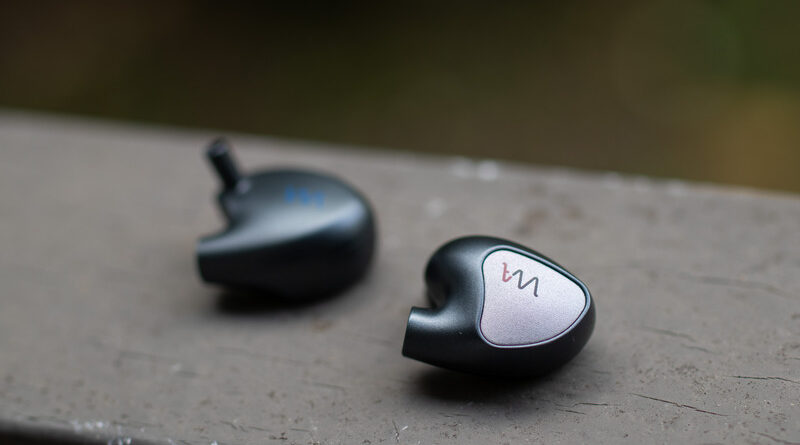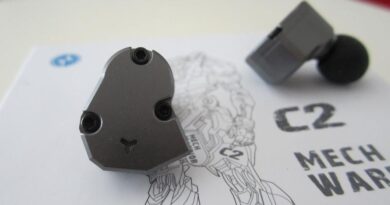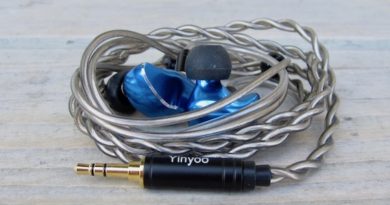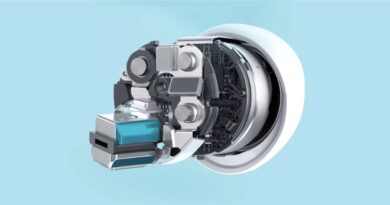Westone MACH 40 and MACH 60 Review – A Hit And A Miss
Pros — Well accessorized
– Great stock cable (Linum SuperBaX with T2 connectors)
– Laid-back, bassy tuning that’s never harsh or fatiguing (MACH 40)
– Balanced, lively tuning with good amount of resolved detail (MACH 60)
– Very comfortable to wear
– Excellent layering (MACH 60)
– Good imaging (MACH 60)
Cons — Plastic shells do not befit the high price tag (though they are practical for pro usage)
– Bass bloat and recessed upper-mids (Westone MACH 40)
– Lacks stage depth and imaging is hazy (MACH 40)
– Upper-treble roll-off (MACH 40 and MACH 60)
– Pricing could be more competitive
In this Article
INTRODUCTION
Westone Audio has become one of the most popular manufacturers in the pro audio scene over the years. Their gears are reliable, gets the job done, and robust enough to last through extreme duress.
The audiophile scene has been a different story however, as for one reason or another, they have not been part of the conversation in recent years. The launch of the MACH series aims to change all that, as Westone aims to re-enter the minds of new audiophiles who are often enamored by the rapid-fire Chi-Fi release cycle.
As part of the Westone MACH series’ EU tour, I had the chance to try the MACH 40 and MACH 60 IEMs. Priced in the premium segment of the market, these IEMs face some tough competition, both from established brands and the newest competitors on the block. Let’s see if they are capable of standing toe-to-toe with their peers.
Note: the ratings given will be subjective to the price tier. Westone was kind enough to send me the MACH 40 and MACH 60 as part of the Review Tour
Sources used: Questyle CMA-400i, Lotoo PAW 6000
Price, while reviewed: $600 (MACH 40), and $1100 (MACH 60). Can be bought from Westone’s website.
This is the 350th earphone review by www.audioreviews.org!
PHYSICAL THINGS AND USABILITY
PACKAGING AND ACCESSORIES
The packaging of the Westone MACH 40 and MACH 60 is quite similar, if not the same. Both IEMs come with an oversized Pelican case (with waterproofing and impact resistance), a carrying pouch, a Linum SuperBaX T2 cable (0.75 ohm impedance), 5 pairs of foam tips and 5 pairs of silicone tips, one cleaning tool, and a cable-wind.
The Estron T2 connector here is a more robust version of the mmcx connectors and it’s a lot easier to attach and detach the earpieces from the cable.
BUILD QUALITY
The entirety of the Westone MACH series has plastic build, which is very lightweight. Unfortunately, the use of plastic takes away from the “premium-ness” of these IEMs. Westone MACH 40 and MACH 60 look identical from afar, with the exception of the model named printed on the face-plate.
COMFORT, ISOLATION, AND FIT
Both models lack any vents which aid in isolation. With the foam tips, isolation is exceptional and rivals the Etymotics. Unlike the Etymotics though, the comfort is much better since an extremely deep fit is not required.
SOURCE AND EARTIPS
DRIVER SETUP
The Westone MACH 40 utilizes 4 balanced armature (BA) drivers in a three-way crossover: two BAs for lows, one for the mids, and one for the highs. The Westone MACH 60 meanwhile has 6 BA drivers in a three-way crossover: two BAs each for lows, mids and highs.
One curious thing is that Westone do not have individual “tubes” that exit into the nozzle for these IEMs, which is often the case with multi-BA IEMs at this price. The acoustic chamber design seems to “consolidate” the sound of all the drivers before channeling it through the nozzle.
WESTONE MACH 40 – TONALITY AND TECHNICALITIES
The tonality of the models are rather different, so I will go through them separately.
The Westone MACH 40 has a bassy, laid-back sound with recessed or “pulled-back” upper-mids. The 4-6kHz region is also recessed, resulting in a darkened treble. The sub-bass reach is good, with sub-bass rumble being present, albeit lacking the dynamism and physicality of certain dynamic-driver counterparts.
The upper-mid recession further increases the perception of bass. Male vocals sound richer, fuller, as a result. This added thickness can take away some fine details, however, especially in baritone vocals. Dense snare hits also tended to mask some finer details in tracks. Moreover, due to the lack of pinna gain, female vocals sound somewhat strained, especially in high-pitched vocals.
This type of laid-back, dark tuning aids in long-listening sessions and can avoid fatigue. Unfortunately, it also takes away the energy of tracks, as everything sound dampened and devoid of dynamism. The stage width is good on the MACH 40, but lacks the stage height and depth that some of their peers can offer. Resolved detail is also middling, mostly due to the tuning choices as I believe the drivers inside are plenty capable.

WESTONE MACH 60 – TONALITY AND TECHNICALITIES
The Westone MACH 60, on the other hand, goes for a more balanced take on things without going overboard. The lower-mids are still somewhat thicker-than-neutral and the sub-bass has great extension and good amount of rumble, but the upper-midrange has good amount of presence (+7dB over lower-mids), resulting in great vocal reproduction.
Acoustic instruments have lifelike timbre, while guitar riffs and cymbal hits convey the energetic “leading edge” one would expect. Macrodynamic punch is still somewhat lacking due to the rolled-off upper-treble, but microdynamics (e.g. subtle gradations in volume) are well reproduced.
Soundstage is somewhat evenly spread in terms of depth, height, and width. Imaging is precise, though things happening on the back of your head will have an odd central position (an issue that plagues most IEMs). Resolved detail is good, though certain IEMs in this price category will out-resolve the MACH 60 due to better extension in upper-treble.
Overall, the MACH 60 is noticeably better tuned than the MACH 40, and better showcase the resolving potential of the drivers inside.
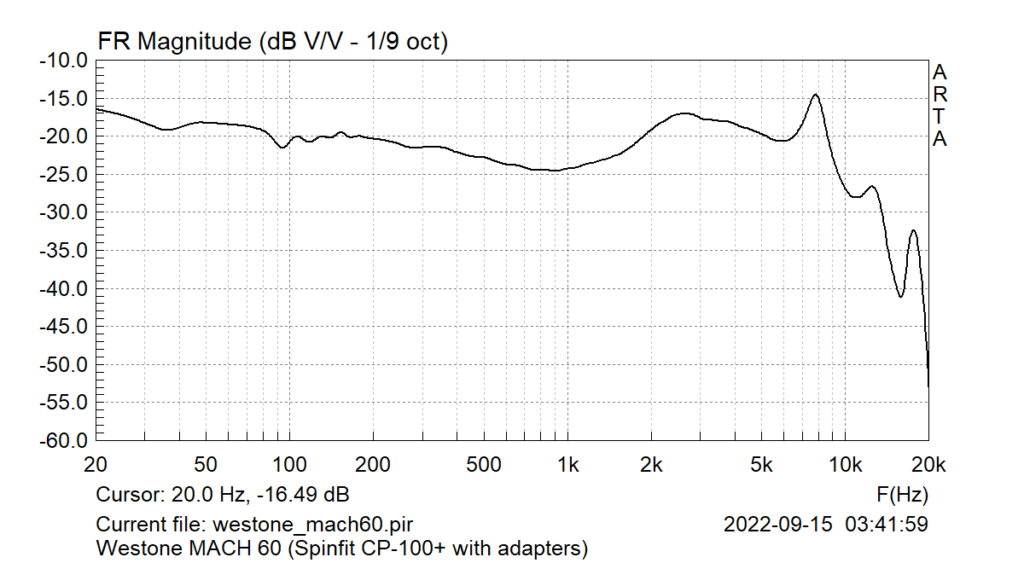
SELECT COMPARISONS
Compared to the Dunu Studio SA6, the Westone MACH 40 is noticeably less resolving, and not as well-built. The Westone IEMs have better isolation and comfort, but the Studio SA6 has such a well-rounded presentation that it’s hard to beat them in this price bracket. The stock cable is also better on the Dunu, though I am partial to the Pelican case in the Westone packaging).
As for the Westone MACH 60, they outresolve the Dunu IEMs, and have better bass response than the Campfire Audio Andromeda 2020. The upper-mids are better defined on the Westones, and I would say bass and mids in general are better tuned and can convey more details on the MACH 60. It’s the upper-treble and staging/imaging that the Andros lead.
In fact, when it comes to imaging and staging, the Andromeda 2020 still reign supreme in that USD$1000 range, with few IEMs rivaling them, let alone surpassing them. Also the Andros have an anodized aluminium shell (prone to discoloration over time) that feels more premium in hand. Overall, for a more evenly tuned bass and mids, the MACH 60 are better options than the Andros. For those seeking airy treble and “holographic” staging, the MACH 60 won’t be as impressive as the Campfire offering.
CONCLUDING REMARKS
Westone MACH 40 leave me with mixed feelings. I can appreciate the warm, laid-back tuning, but the lack of technical chops make them uninspiring. The MACH 60 are much better tuned for my tastes, and are fairly resolving in the bass and midrange regions.
Sadly, both IEMs fall short on treble extension, and while the MACH 60 offer some lower-treble presence, given the price tag I’d expect better upper-treble reach. The plastic build is also something I am not too fond of, though I am certain they will last a while even under duress. Westone’s build and after-sales support has always been good, so no worries there.
In the end, the Westone MACH 60 is the one I can recommend for audition, especially for those who want a pair of engaging, slightly warm tuned IEMs that do not go overboard on any specific frequency. The high price-tag makes them less of a bargain, but it is what it is.
MY VERDICT
4/5 (MACH 60)
3/5 (MACH 40)



